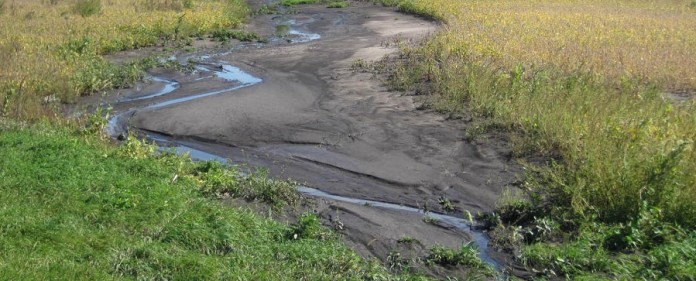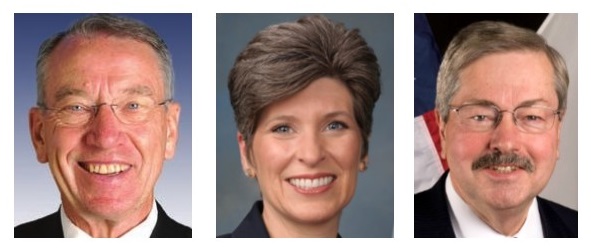
Iowa’s senators Grassley and Ernst and Governor Branstad are now engaged in a fight to oppose the U.S. Environmental Protection Agency (EPA) ruling on the Waters of the United States. Grassley and Ernst said in a recent Des Moines Register editorial that “the EPA is ignoring the will of the people and bypassing the will of congress.”
The EPA is making an effort to enforce the federal Clean Water Act that was passed by the 92nd Congress in 1972 and signed into law by Republican President Richard Nixon. This law was intended to clean up the polluted waterways of our country and protect them from further damage. Progress was made in many states.
However, water pollution in Iowa continues to rise, giving this state some of the most polluted streams in the U.S. Last May the Iowa Department of Natural Resources increased the number of lakes and rivers on the “impaired waters” (polluted) list in Iowa by 15 percent, bringing the total to 725, and in 2014 nitrate levels in the Raccoon River were at record highs.
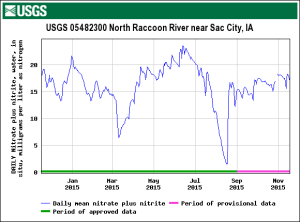
Several cities in Iowa have been warned not to drink the tap water because their water treatment facilities cannot remove the nitrate to a safe level. Des Moines has a nitrate removal system to purify the drinking water, and it costs several thousand dollars a day to operate. The cities of Boone and Cedar Rapids are developing contingency plans for nitrate removal systems. The residents of those cities will pay more for nitrate removal. The polluters will pay nothing.
The citizens of Iowa are concerned about water quality. In a survey done by the Dallas County Conservation Board in 2001, 60 percent of the residents of Dallas County said water quality was their number one concern. And in the February 26, 2015 an Iowa Poll found that 63 percent of the people supported the lawsuit the Des Moines Waterworks has filed against three county drainage districts in northwest Iowa. The people of Iowa want clean water.
For years the agriculture community and the Iowa DNR ignored the pleas of environmental groups for clean water. The Iowa Sierra Club and the Iowa Citizens for Community Improvement brought a lawsuit in federal court against the Iowa DNR for not enforcing the federal Clean Water Act.
In July 2013 these two groups won the lawsuit, and the DNR was forced to take action. That was when the state’s Nutrient Reduction Strategy (NRS) came into being. This is a voluntary plan to reduce by 45 percent the nutrients (fertilizer and manure) running off the farm fields.
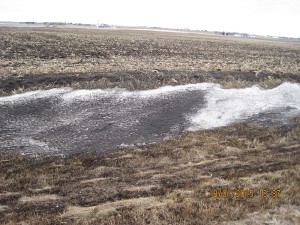
The NRS plan does not seem to be working very well. During the heavy rains this spring, some fields were losing topsoil at more than 20 tons per acre. Iowa’s rich, valuable topsoil was being washed away, carrying with it nitrogen fertilizer, phosphorus and bacteria from manure as well as other nasty chemicals into the rivers, and all of it was hastily flushed along by miles of field tiles.
In mid-November 2015 the amount of nitrate in the Raccoon River is 14.5 milligrams per liter—a high reading for this time of the year and one-and-a-half times the safe amount for drinking water.
The Iowa Soybean Association stated in their Oct. 26, 2015, newsletter “Advance” that the 2015 growing season was an “exceptional year for nitrate loss”—meaning an exceptionally bad year. Their report goes on to say, “Of the 45 sites in the Raccoon River, with more than 10 years of data, 27 of the sites recorded the highest average concentration in 2015 and eight had the second-highest year measured.”
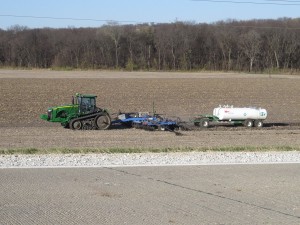
The situation may become even worse in 2016. The beautiful fall weather has allowed many fields to be tilled black, and manure has been applied. White ammonia tanks are rolling over the countryside like ants at a picnic.
If the voluntary NRS is not working, then regulations are needed. Iowa’s Senators say the “one-size-fits-all method is the wrong approach,” but there are conservation practices that all should be doing, such a buffer strips along all streams and grassed waterways in fields. These two soil conservation practices should be made mandatory, and others should be considered.
If the government of Iowa is not adequately addressing the state’s water pollution problem, it is appropriate and necessary for the U.S. EPA to do the job.



